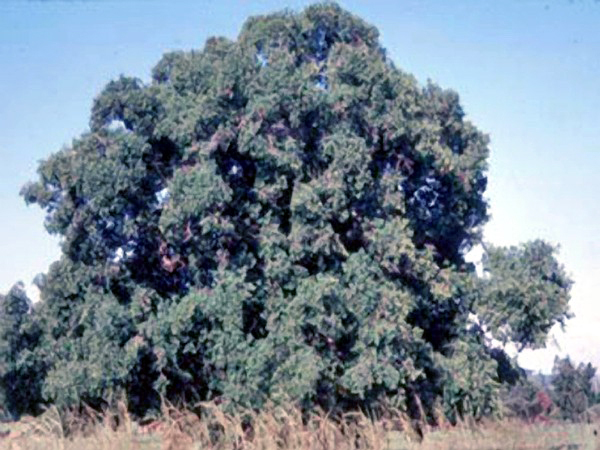Ficus thonningii

|
|
Ficus thonningii Common Names: Wild Fig, Fiddle-Leaf Fig, Common Wild
Fig, Bark-Cloth Fig, Strangler Fig Scientific
Classification Kingdom: Plantae Clade: Tracheophytes Clade: Angiosperms Clade: Eudicots Clade: Rosids Order: Rosales Family: Moraceae Genus: Ficus Species: F. thonningii Binomial Name: Ficus thonningii Blume Synonyms: Ficus burkei (Miq.) Miq., Ficus microcarpa Vahl (non Wagner), Ficus petersii Warb. Morphological Description Ficus thonningii is an evergreen tree, 6–21 m tall, with a rounded to
spreading, dense canopy. Key features include: · Habit: Often epiphytic or a strangler, with a fluted or
multi-stemmed trunk · Bark: Hairy on young branches, smooth and grey on older stems,
lenticellate, with aerial roots · Leaves: Simple, glossy dark green, elliptic to obovate, 3–20 cm
long, 1.5–10 cm wide, thin or leathery, with 6–12 lateral veins · Fruits: Figs, 7–14 mm in diameter, yellow to red, globose or
ellipsoid, hairy or smooth, in leaf axils · Latex: Copious, milky, turning pinkish upon exposure Distribution and Habitat Ficus thonningii thrives in: · Native Range: Sub-Saharan Africa (Senegal to Ethiopia, south to South
Africa) · Habitat: Rainforests, montane forests, riverine forests, savannas,
woodlands; 0–2,500 m altitude · Soil/Climate: Well-drained soils; tropical to subtropical, 800–2,500 mm
rainfall It often colonizes rocky
outcrops and riverbanks (Berg & Wiebes, 1992). Ethnopharmacology · Anti-inflammatory/Analgesic: Bark/leaf extracts for arthritis in
Nigeria; reduced paw edema in rats (50% at 200 mg/kg) (Dangarembizi et al.,
2013). · Antimicrobial: Leaf decoction vs. S. aureus (MIC 50 µg/mL) and C. albicans in Ghana (Ogbolie et al., 2007). · Gastrointestinal: Bark for dysentery in Zimbabwe;
antidiarrheal in rats (70% at 300 mg/kg) (Njoroge & Kibunga, 2007). · Respiratory: Bark decoction for tuberculosis in Kenya; anti-inflammatory
in vitro (Cousins & Huffman, 2002). · Wound Healing: Latex is used to promotes Wound healing (Shi et al., 2018). Scientific validation
supports its broad use, though caution is advised (PROTA, 2019). ⚠ Toxicity Profile: Latex irritates skin/eyes; oral doses (>500
mg/kg) elevate liver enzymes in rats, suggesting hepatotoxicity (Aniagu et al.,
2008). Additional Information · Ecological Role: Figs feed birds, bats, and primates;
pollinated by specific wasps (Berg & Wiebes, 1992). · Cultural Significance: Sacred in Kikuyu rain-making rituals
(Kenya); bark-cloth source in Uganda (Cunningham, 2001). · Economic Value: Timber, fodder, shade tree; latex for
traditional uses (PROTA, 2019). References
External Links More Pictures |
|
| Compounds of Ficus thonningii |
|
| References |